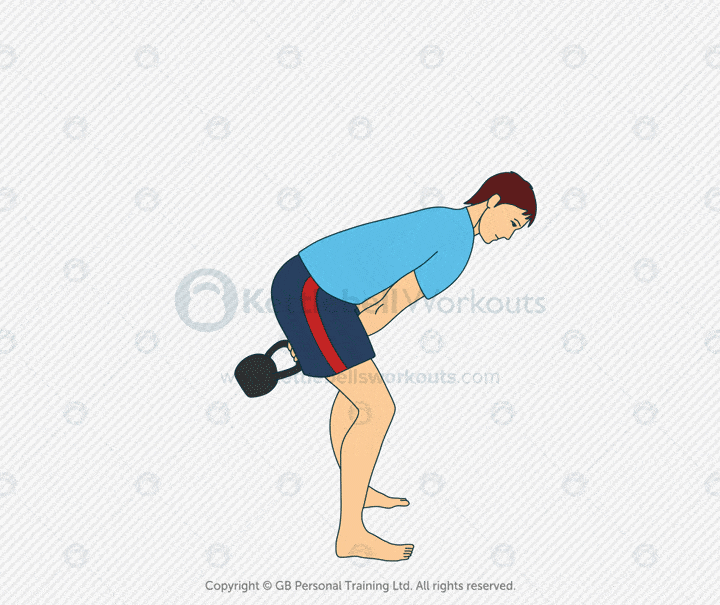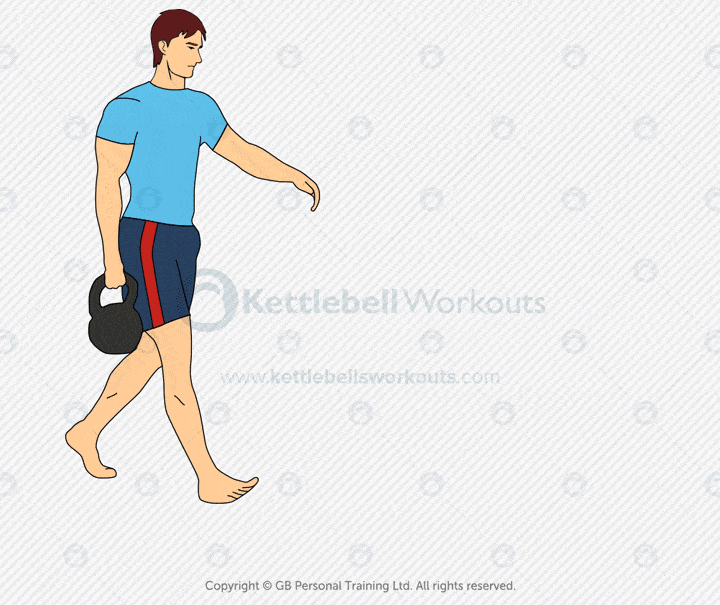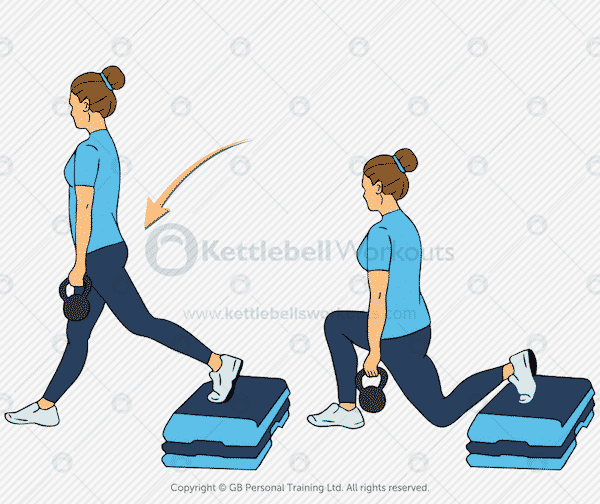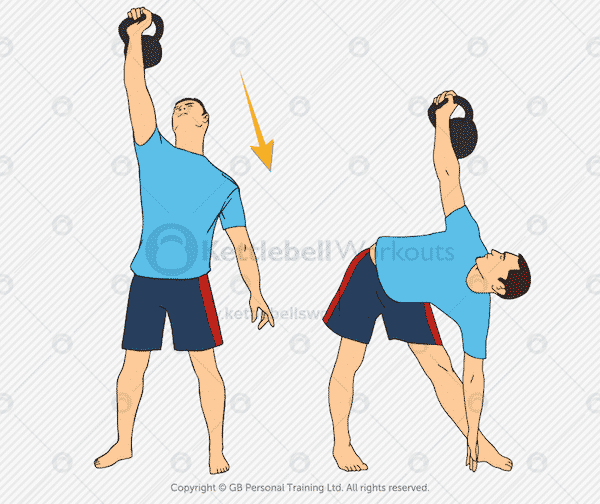Last Updated on 29 July 2025 by Greg Brookes
Back in 2006, I was frustrated with my pressing plateau. Barbells aggravated my shoulder, dumbbells sometimes felt awkward, and bodyweight alone wasn’t enough. Then I discovered kettlebells. Their unique design not only helped me press without pain but improved my stability and overall strength beyond what I thought possible. If you’re ready for a kettlebell workout focused on building serious, real-world strength, this guide is for you.
Strength as a Skill
Strength isn’t just about building bigger muscles, it’s about teaching your nervous system to produce more force efficiently. Kettlebells excel at this by demanding full-body tension and stabilisation through each movement.
Motor units, groups of muscle fibres activated by a nerve, determine your force output. The more you can recruit, the stronger you become. Practising kettlebell lifts intentionally, gripping the handle tightly, rooting your feet, bracing your core, enhances neural drive. Clients often tell me the same kettlebell feels lighter after just a few weeks of intentional tension practice.
One female client increased her single-arm press by 20% in just four weeks using ladder training combined with focused tension cues like squeezing the handle and ‘corkscrewing’ her feet into the floor.
Common Mistakes in Kettlebell Strength Training
Many trainees treat kettlebells as conditioning tools only, using light swings and snatches for high reps while neglecting heavy squats, presses, and carries.
Another mistake is jumping into complex flows without mastering foundational strength patterns first. Strength is built with simple, heavy, well-executed lifts before adding volume or complexity.
One vs Two Kettlebells
One kettlebell is often enough for most upper body movements such as presses, rows, and Turkish Get Ups, which build shoulder stability and unilateral strength.
However, the lower body is capable of far more load. Squats, deadlifts, and carries are better challenged with two kettlebells to reach an appropriate training stimulus.
For example, the double-racked front squat loads the legs, hips, core, and upper back effectively, preparing the body for barbell front squats or heavy loaded carries.
Core Movement Patterns for Strength
Mastering these core patterns builds a strong, resilient body:
1. Hinge: Kettlebell Swing

The kettlebell swing is the king of hip power. Drive from your hips rather than squatting the movement. Imagine throwing the kettlebell behind you as you snap your hips forward, keeping your lats engaged.
2. Squat: Goblet Squat & Double-Racked Squat

Goblet squats teach excellent form while building quad, glute, and core strength. For more load, progress to double-racked squats, holding two kettlebells at chest height to challenge your core and upper back.
3. Press: Single-Arm Press & Push Press

Single-arm overhead presses build unilateral strength and shoulder stability. The push press variation allows heavier loads by adding leg drive.
4. Pull: Bent-Over Row & Clean

Rows develop upper back and lat strength, essential for posture and pull-ups. Cleans are both a pull and an explosive hinge, bridging strength and power.
5. Carry: Loaded Carries

Farmer’s carries, rack carries, and overhead carries build grip, core, and full-body stability. Few movements deliver as much real-world strength as loaded carries.
Rep & Set Schemes for Strength
For maximal strength:
- 3–5 sets of 3–5 reps at 75–90% effort
- Rest 2–3 minutes between sets
For strength endurance:
- 4–6 sets of 6–10 reps with moderate weight
- Rest 60–90 seconds between sets
Sample Workout Templates
Here are three proven kettlebell strength workouts I use with clients:
1. Strength Ladder
Ladders accumulate volume without fatigue compromising form.
Example:
- Clean & Press x 1 rep each arm
- Clean & Press x 2 reps each arm
- Clean & Press x 3 reps each arm
Repeat this ladder 3–5 times with controlled rest between ladders.
Watch me perform the Kettlebell Clean and Press
2. Classic 5×5
The timeless strength protocol adapted for kettlebells.
Example:
- Double Kettlebell Clean & Press: 5 sets of 5 reps
- Rest 2–3 minutes between sets
This builds maximal strength efficiently while reinforcing form under load.

3. Density-Based Single-Kettlebell Workout
Track total reps within a time block to build volume efficiently.
Example:
- 15 minutes AMRAP:
- 8 Bulgarian Lunge (each side)
- 5 Single-Arm Press (each side)
- 10 Swings
This approach improves both strength and conditioning while ensuring quality reps under fatigue.

Programming Models for Strength – Laddering & EMOM Explained
- Laddering builds volume without fatigue destroying your form. Performing 1 rep, then 2 reps, then 3 reps feels smoother than 3 straight sets of 3 reps. This enhances neural learning and keeps motivation high.
- EMOM (Every Minute On The Minute) structures build power endurance. Performing set reps each minute teaches your nervous system to recover quickly and maintain quality output under time constraints, ideal for fighters, grapplers, and athletes needing repeat power bursts.
Progression Programming: 4–12 Week Strength Cycles
Here’s how to structure your training long-term:
- Weeks 1–4: Ladder training to refine skill and build volume.
- Weeks 5–8: Transition to 5×5 protocols for heavy loading and maximal strength.
- Weeks 9–12: Use EMOMs or density-based sessions for power endurance and finish with a deload week.
Kettlebells and Barbell Strength Transfer
Kettlebells build barbell lifts by improving bracing, core stability, and shoulder integrity. After a six-week block of double kettlebell front squats, my barbell squat felt stronger and more controlled.
Coach’s Insight
Since 2006, I’ve coached athletes, busy parents, and professionals using kettlebells to build real strength.
One client, a dad in his 40s with chronic back pain, couldn’t deadlift with a barbell. We rebuilt his hinge pattern with swings and single-leg deadlifts, then progressed to double kettlebell deadlifts and carries. Within weeks, his back felt stronger and daily movements felt effortless.
Another client, an amateur boxer, used bottom-up cleans and single-arm presses to strengthen her shoulders and improve her punch stability. Her coach noticed a significant difference within two months.
Strength isn’t just about numbers; it’s about confidence, resilience, and freedom to move without fear over everything else. Kettlebells teach that skill safely, efficiently, and with minimal equipment.
Final Thoughts
Building strength with kettlebells is simple but not easy. Focus on the fundamentals, stay consistent, and respect the process. Kettlebells teach strength as a skill, the type that carries into everyday life, improves resilience, and builds confidence.
If you’d like to combine strength with other goals, check out my full guide to kettlebell workouts by goal.
Frequently Asked Questions
For swings, most men start with 16–24kg and women with 12–16kg. For presses and squats, use a load you can control for 5–8 reps with good form.
Absolutely. A single kettlebell can build impressive strength if programmed progressively with proper form and varied movement patterns.
2–3 dedicated strength sessions per week is optimal, leaving room for recovery and other training modalities.
For general strength and conditioning, yes. If your goals are powerlifting-specific, combine kettlebells with barbell lifts for maximal development.
Increase reps or sets, shorten rest periods, or move up to a heavier kettlebell. Ensure your form remains solid as you progress.




Instead of doing 5×5 for strength what are your thoughts about doing reps
2-3-5
2-3-5
2-3
Yes Ralph, ultimately you will find that you never hit the exact numbers because each day is different so one day you may push an extra rep or two and other days you perform less. So stay flexible.
Hi Greg,
Can strength training be done at the same day as aerobic workout?
Pure strength will require heavy weight and only around 5 reps, this will get your heart rate up but not in an aerobic way like you are thinking. You can improve your cardio by using a few more reps, slightly less weight and then minimal rest between exercises.
Hello, Greg. Last night I did the 5 minute workout with the slingshot, the halo, the good morning, and the dead-lift. I cannot find that page. Can you help me find it, please? thank you.
Do you mean these 5 beginner kettlebell exercises Matrona?
Hi Greg,
Great resources.
What’s your opinion on using unbalanced kettlebells for the double kettle strength work?
Thanks,
Reg
Yes I like mixing it up Reg, you just have to be sure to change sides frequently to keep things balanced. I’ve written also more on doubles kettlebell training here
Do one of the workouts per day..or all seven in the same day…
One every day or every few days depending on your goals and weight used.